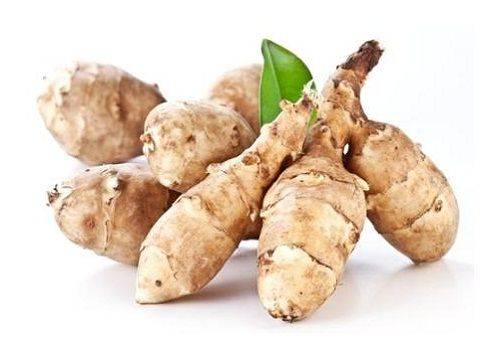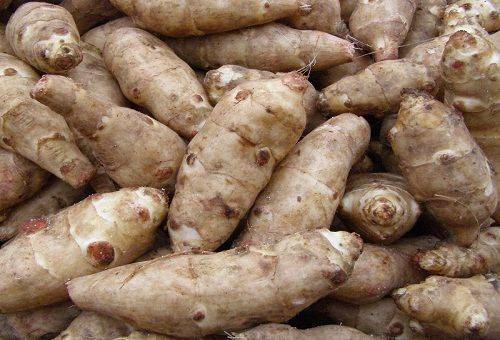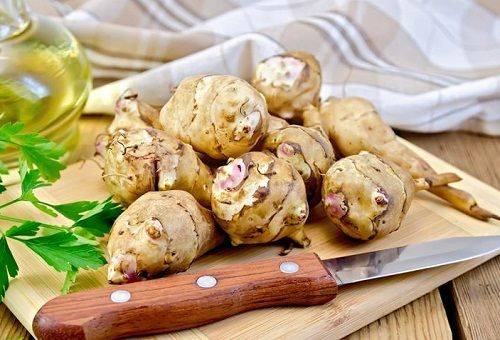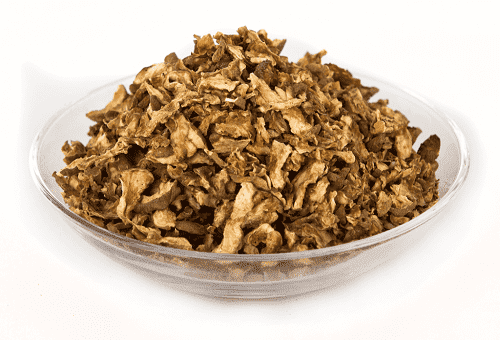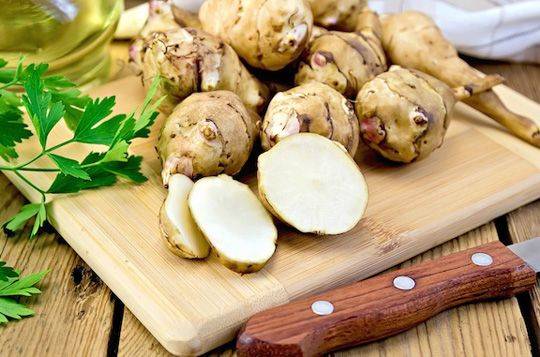How can Jerusalem artichoke be stored: drying, freezing and preserving the product
Content:
With independent cultivation of earthen pears in a summer cottage, there are several effective approaches to crop processing. And so that you don’t have to figure out how to store Jerusalem artichoke at all, you just need to dig out the amount of product that will be eaten in the near future.
The remains can be collected if necessary, the root crop tolerates frosts perfectly. Storage of the product in an apartment also implies an impressive variety of options. Jerusalem artichoke can be dried, canned and frozen, which ensures an impressive flavoring variety of ready-made dishes.
Methods of storing Jerusalem artichoke in a personal plot B
Jerusalem artichoke can be traditionally stored in a basement with low temperature and high humidity, while remember that even a slight increase in temperature can adversely affect tubers. If there is a small plot of land available, then storage of an earthen pear can take the following form:
- The easiest way is to dig a hole of medium depth into which the rest of the crop is laid out, which will not be needed throughout the winter. It is best to put them in wooden crates.
Tip: Jerusalem artichoke can be stored in wooden containers at home - on the balcony, but only if it is not heated and insulated with nothing. With increasing temperature for + 2ºС, the nutritional properties of the product begin to rapidly decline.
- Snow collars. The best option for street storage of earthen pears. We clear the platform, pour the tubers on it with an even layer. Spread 10 cm of snow on top and again a layer of tubers. After the construction of the multilayer structure is completed, it must be sprinkled with sawdust and insulated with straw.
- Storage in trenches. While the ground is not frozen, we dig a shallow trench in it, the bottom of which we lay out with fir branches. We install plastic flower pots on them, filled with root crops cleared of dirt. We cover everything with a layer of snow, then a heater (hay or branches) follows and cover everything with a sheet of roofing material.
The main thing to keep in mind when using outdoor conditions for storing Jerusalem artichoke is that fresh air should not affect the skin. It contributes to the release of harmful components that negatively affect the condition of the body. An additional prevention of this phenomenon may be the use of special non-toxic paraffin compounds.
How to dry and freeze an earthen pear?
Storage of Jerusalem artichoke at home is not limited to the use of a refrigerator, especially since tubers lie in it for no more than a month. And then, if you put them in a sealed container or plastic bag. The peeled and chopped root crop will retain freshness for only a few days.
It is better to create homework in one of the following ways:
- Freezing We clean the Jerusalem artichoke root, wash it, cut into strips or cubes. Blanch the product in milk-curd whey at maximum temperature for 5-10 minutes. Then we cool the product and put it into storage in the freezer.
- The use of sand. We take canvas or plastic bags, spread them with wet sand, peat or sawdust and fill them with an earthen pear. It is necessary to carefully tie the container, then the product will stand without problems on a not very warm balcony or unheated loggia before the onset of heat.
- Ttraditional drying. Before drying an earthen pear, it needs to be cleaned, washed and cut into thin slices. We use only good tubers without wormholes and damage. Spread the resulting pieces in a thin layer on a tray and hold in the open air, protecting from direct sunlight until the plates are ready.
Tip: It is recommended to use a ceramic or bone knife for slicing Jerusalem artichoke, as the metal is highly oxidized, causing the tool to become unusable.
- Heat treatment. Jerusalem artichoke fruits can be dried in the oven, so it will be much faster. In a liter of water, we dilute a teaspoon of baking soda, bring the resulting solution to a boil. In it we blanch tubers cut into pieces for no more than 9 minutes. Then we wait until they cool, cut into thin plates and dry until tender in the oven at a temperature of 60 ° C. The finished product is placed in a sealed glass container, otherwise bugs will get into it.
Dried Jerusalem artichoke can be ground into coarse flour. Such a powder can be used in so many unusual and traditional recipes.
Tasty and healthy conservation of Jerusalem artichoke
There are dozens of recipes for harvesting earthen pears. Moreover, the direction does not do with standard pickles and salads. If you wish, you can make delicious jam from Jerusalem artichoke.
- Pickled Jerusalem artichoke. We need carrots, root vegetables themselves, two tablespoons of vinegar, salt and honey per liter of water. We clean the vegetables and cut into arbitrary pieces, spread in sterile jars. From the remaining ingredients, we prepare the marinade, with which we pour the products. We pasteurize the containers for a quarter of an hour and roll up.
- Jerusalem artichoke salad. For a kilogram of tubers we take half a kilogram of carrots, lemon and salt. We cut the vegetables, rub the lemon on a fine grater or chop in a blender. We mix these ingredients, add salt to taste and wait until the composition gives juice. Then we lay out the mass in banks, pasteurize for half an hour and roll up.
- Jerusalem artichoke jam. For a kilogram of earthen pear we take the same amount of pumpkin pulp, lemon and a glass of granulated sugar. We clean and cut root vegetables and pumpkin, chop the lemon on a grater or in a blender. We mix all the components and insist for about an hour. Then put the mass on fire, bring to a boil and simmer for no more than five minutes on low heat, stirring constantly. The finished product is poured into cans and tightly closed. During the day, banks should be kept under the covers in an inverted form.
- Nutrient composition to enhance immunity. Two glasses of sea buckthorn juice are mixed with a glass of boiled or distilled water. We cut a kilogram of the root crop into cubes, fill it with the resulting liquid and fill it with a glass of sand. We put the mass on fire and bring to a boil. Immediately remove from heat and pour into banks. We pasteurize for half an hour and roll up.
Using these methods, it is possible to maximize the preservation of nutrients in the composition of the product and optimally beat its taste.
